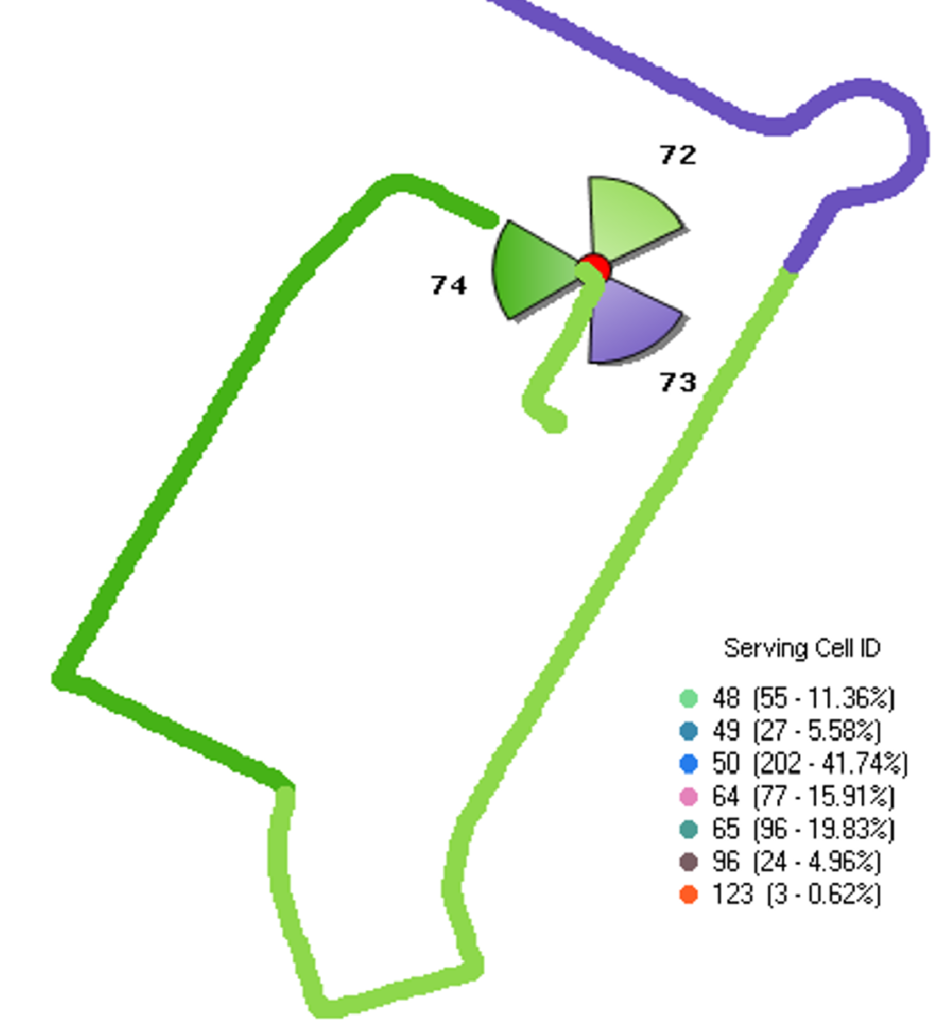Physical Cell Identity (PCI) is a important parameter in LTE (Long-Term Evolution) networks, playing a pivotal role in network accessibility and retainability. This article will delve into the significance of PCI, the strategies for PCI planning, its impact on key performance indicators (KPIs), and measures to avoid issues related to PCI.
PCI stands for Physical Cell Identity.
- Definition: PCI is a unique identifier used to distinguish between different cells in an LTE network. It is crucial for various functions including cell selection, reselection, and handover.
- Range: 0 to 503.
Below picture represents PCI Plot & Thresholds during which is derived from LTE drive test log files.

Significance:
- Cell Identification: PCI identifies the cell and is used to transmit data within the network.
- Synchronization: It helps in the synchronization of the UE (User Equipment) with the network.
Calculation of PCI:
- Formula: PCI = PSS + 3 * SSS
- PSS (Primary Synchronization Signal): Identifies the cell identity within a group. The value can be 0, 1, or 2.
- SSS (Secondary Synchronization Signal): Identifies the cell identity group. The value ranges from 0 to 167.
Guidelines for PCI Planning.
Proper PCI planning is essential to avoid interference and ensure optimal network performance. Here are the key strategies for effective PCI planning:
1. Avoiding Same PCI on Adjacent Cells.
Ensure that neighboring cells do not share the same PCI. This strategy prevents interference and confusion during cell selection and handover processes.
2. PCI Mod 3.
Avoid assigning the same PCI mod 3 values to adjacent cells. PCI mod 3 is the remainder when the PCI is divided by 3. For example, if PCI is 26:
26 ÷ 3 = 8 and R = 2
The remainder is 2, which is the PCI mod 3 value. This strategy is crucial in MIMO networks and densely populated areas to prevent interference.
3. PCI Mod 30
Avoid assigning the same PCI mod 30 values to adjacent cells. This strategy helps in mitigating uplink interference, as there are 30 unique PCI sequences reserved for uplink.
- Avoid Co-PCI Assignment for Close Sites: Assigning the same PCI to neighboring cells can cause interference and handover issues.
- Same SSS, Different PSS for Sectors on the Same eNodeB: This practice helps with synchronization and improves traceability, although it is not mandatory.
- Avoid Co-PCI Assignment for Neighbors: This helps prevent handover failures and other issues related to cell identity confusion.
- Separate PCI Sets for Outdoor and Indoor Cells: This aids in PCI management and caters to different deployment scenarios, as indoor cells are often not tri-sectored and may use various antenna configurations.
Impact of PCI on KPIs.
Accessibility
PCI collisions and confusions can severely impact accessibility KPIs, such as call setup success rate and random access success rate. For instance, during the RRC (Radio Resource Control) connection setup, if two cells have the same PCI, the request may be sent to the wrong cell, leading to accessibility failures.
Retainability
PCI issues can also affect retainability KPIs, such as the drop call ratio. PCI confusion during handover can result in the mobile device attempting to connect to a wrong cell, leading to handover failures and dropped calls.
PCI Assignment Strategies.
There are two primary strategies for PCI assignment:
1. Same PSS, Different SSS
Assign the same PSS (0, 1, or 2) to all sectors in a site, while varying the SSS for each sector. This strategy minimizes interference on resource elements used for traffic channels, ensuring cleaner traffic data.
2. Same SSS, Different PSS
Assign the same SSS to all sectors in a site, while varying the PSS. This strategy minimizes interference on reference signal resource elements, providing cleaner reference signals for better channel estimation and access procedures.
Recommended Strategy
The preferred strategy is to use the same PSS and vary the SSS, as it minimizes interference on reference signals, which are crucial for accurate channel estimation and reliable network performance.
PCI Grouping.
In LTE networks, the 504 PCIs are divided into four groups, each containing 126 PCIs. Typically, 120 PCIs are allocated for active cells, while 6 are reserved for future expansion. Tools like ATOLL and other planning tools automate PCI allocation to minimize cell reference signal interference and maximize PCI reuse distance.
PCI Collision and Confusion.
PCI Collision
PCI collision occurs when two neighboring cells have the same PCI, leading to accessibility issues. During the RRC connection setup, the request might be directed to the wrong cell, resulting in setup failures.
PCI Confusion
PCI confusion occurs during handovers when the target cell has the same PCI as a non-target cell, causing the device to attempt a handover to the incorrect cell. This leads to handover failures and dropped calls.
Additional Considerations:
- Planning Tools: Analysis tools, such as those in the LTE toolbox, can evaluate PCI assignments and detect potential conflicts or suboptimal configurations.
- Management of PCIs: Proper planning and management of PCIs are crucial to maintaining network performance and reliability.
In summary, PCI is a critical parameter in LTE networks used for cell identification and synchronization. Proper planning and management of PCI assignments help in avoiding interference and ensuring seamless handovers, thus maintaining network quality and performance.
Read Also: UE Mesurements RSRP, RSRQ, SINR, RSSI, CQI in LTE?
More Details about: PCI Planning and Design in LTE.